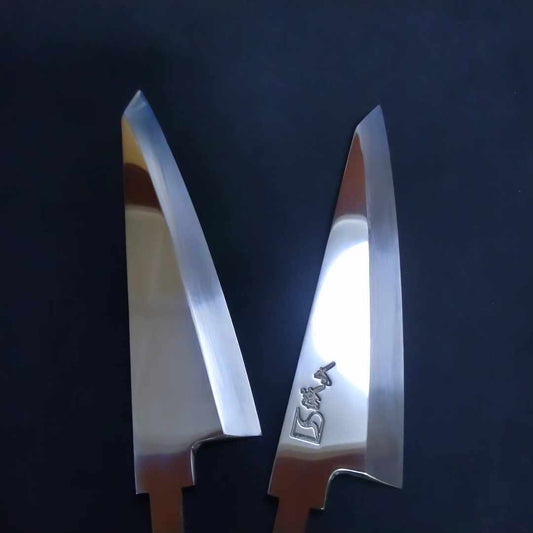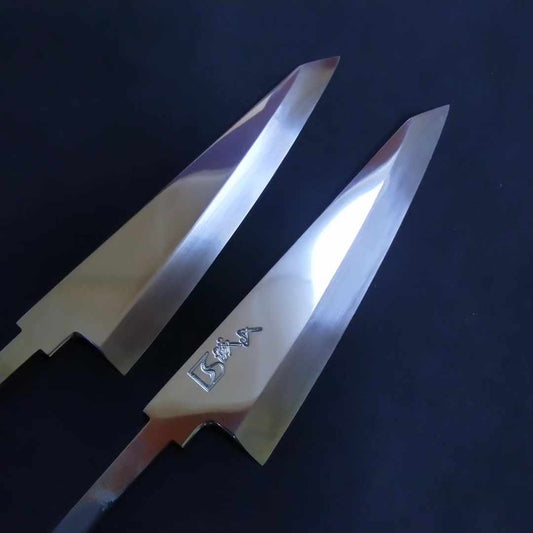
Garasaki
-
Precision and Power for Bone-In Butchery
Strong at the heel, sharp at the tip — the Garasaki moves with precision through bone and flesh, turning butchery into craftsmanship.
-
Garasaki Japanese Knife Collection
-
Super Steel (Honyaki) Garasaki 150mm-Mirror Polished(both sides)
Regular price From $479.00 CADRegular priceUnit price / per$461.00 CADSale price From $479.00 CADSold out -
Super Steel (Honyaki) Garasaki 180mm-Mirror Polished(both sides)
Regular price $555.00 CADRegular priceUnit price / per$534.00 CADSale price $555.00 CAD
KIREAJI's Three Promises to You
-

1. Forged in the Legacy of Sakai
From Sakai City—Japan’s renowned birthplace of professional kitchen knives—each blade is crafted by master artisans with over six centuries of tradition. Perfectly balanced, enduringly sharp, and exquisitely finished, every cut carries the soul of true craftsmanship.
-

2. Thoughtful Care for Everyday Use
Every knife includes a hand-fitted magnolia saya for safe storage. Upon request, we offer a complimentary Honbazuke final hand sharpening—giving you a precise, ready-to-use edge from day one.
-

3. A Partnership for a Lifetime
A KIREAJI knife is more than a tool—it is a lifelong companion. With our bespoke paid aftercare services, we preserve its edge and beauty, ensuring it remains as precise and dependable as the day it first met your hand.
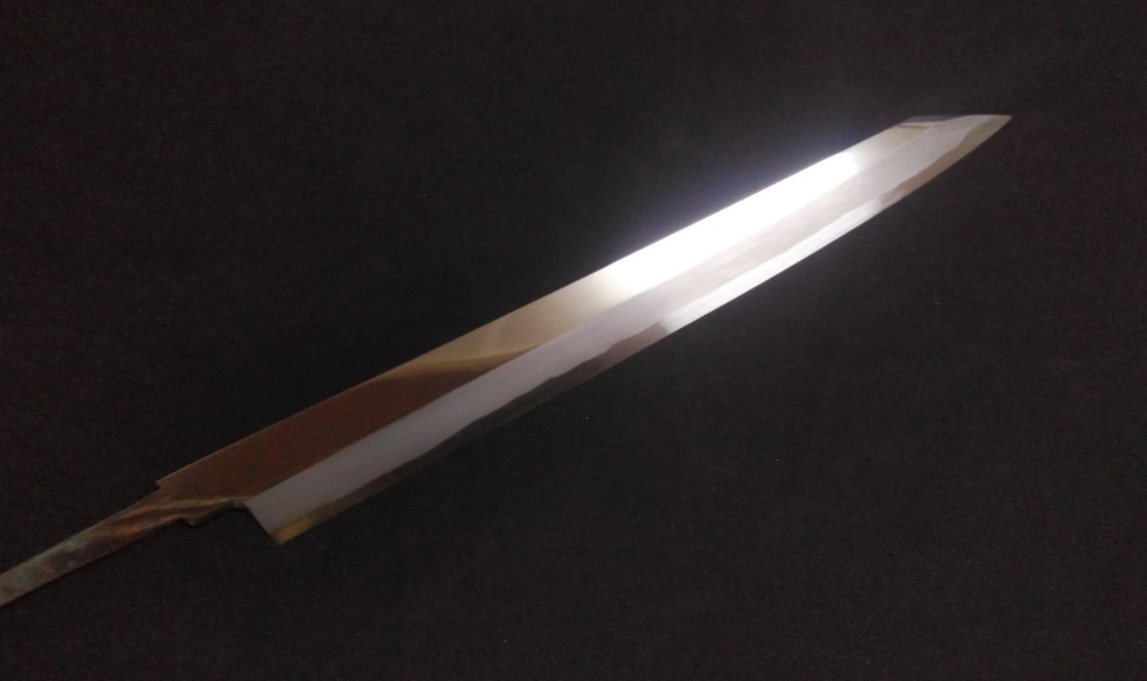
Why Many Product Photos Show Only the Blade
At KIREAJI, every knife is made to order in Sakai, Japan. Photos show the blade before the handle is attached, allowing artisans to perfect the balance and edge for your specific order. Your knife arrives fully finished — tailored just for you.

Global Delivery from Sakai
Across the world, discerning cooks seek authentic Japanese knives from Sakai — Japan’s legendary knife-making city with over 600 years of tradition.
At KIREAJI, we work alongside master artisans in Sakai to fulfill that desire, shipping genuine handcrafted knives directly from the workshop to kitchens worldwide.
Garasaki
-
A Japanese Solution for Butchering Bone-In Meat
Removing chicken thighs from the bone.
Breaking down pork spare ribs into manageable cuts.
These tasks demand both precise control and a blade strong enough to handle bone and cartilage.A deba is too big.
A Western boning knife too flimsy.
The perfect balance between the two is found in the Garasuki. -

Feeling the Bone, Separating the Flesh
The Garasaki is a Japanese knife designed specifically for breaking down bone-in poultry and pork.
Its name, derived from the word “gara” (bones), hints at its purpose:
to separate joints, cut through cartilage, and remove meat cleanly, all with surgical accuracy.Its structure is distinctive.
The heel of the blade is thick and heavy, giving it the stability needed when applying force,
while the pointed tip and compact shape offer the finesse to maneuver in tight spots.
With a sharpened sense of touch, it becomes an extension of your hand. -
Not Just Cutting — But Releasing
Western boning knives certainly have their strengths,
but the Garasaki offers a level of rigidity and feedback that makes a difference when working with bone.
Even when cutting through tough tissue, it doesn’t flex—your intent is transferred directly through the blade.You’re not hacking or forcing your way through.
You’re reading the anatomy, sliding into joints, and letting the structure guide the blade.
It’s not about cutting—it’s about unraveling.
And the Garasaki supports this kind of intuitive butchery like few other knives can. -

A Knife That Elevates Your Skill
To break down meat with grace, you need both an understanding of its structure
and a blade that responds with precision. The Garasaki was made for this balance.Where a boning knife may flex or falter, the Garasaki holds firm.
Yet unlike the larger deba, it’s compact enough to allow for nimble, detailed movements.
Removing joints, slicing through cartilage, peeling flesh from bone—
each action becomes something you do not just with your hands, but with your eyes and intuition.Once you hold a Garasaki, you’ll understand:
This isn’t merely a knife for cutting.
It’s a tool for understanding structure, mastering technique, and expressing your skill.
Garasaki: The Precision Tool for Breaking Down Bone-In Meat
-

The Garasaki blends power and precision, making it the ideal blade for breaking down poultry and pork with surgical control.
Its heavy heel delivers force, while its sharp tip provides finesse where accuracy matters most. -
Why the Garasaki Knife Was Born — Japan’s Unique Poultry Culture and the Evolution of Precision Butchery
-
A Knife with a Specific Purpose
You may not immediately picture the shape or purpose of a Garasaki knife, especially if you’re outside Japan. Designed for breaking down poultry with surgical accuracy, it slips effortlessly into joints and between bones. But to understand why Japanese chefs needed such a specialized tool, you have to look at the country’s unusual history with meat.
-

From Meat Taboo to Culinary Revival
For centuries—in fact, until the late 19th century—eating meat was heavily restricted in Japan under religious and cultural taboos. Poultry eventually returned to the table, but by then, Japanese cuisine had developed a philosophy of honoring every part of the bird. Each cut—thigh, breast, tenderloin, gizzard, skin—was treated as a distinct ingredient, to be prepared in its best possible form.
-

Precision Over Speed
This approach demanded butchery with extreme precision, not speed. From yakitori skewers featuring rare cuts like neck meat and cartilage to regional dishes such as Nagoya Cochin hot pot, Japanese chefs sought to separate each part cleanly, without waste.
-
The Tool That Met the Need
The Garasaki was born to meet this need: smaller than a honesuki, with a slim, pointed tip for navigating tight joints. It is not just for cutting—it’s for preserving the integrity and beauty of every piece. In the hands of a skilled chef, it becomes an extension of their touch, guided as much by intuition as by technique.
-

A Cultural Artifact in the Kitchen
Culture created this tool, and to this day, the Garasaki remains a symbol of Japanese precision butchery—an understated blade with a very specific purpose, shaped by centuries of culinary philosophy.
FAQ About Garasaki
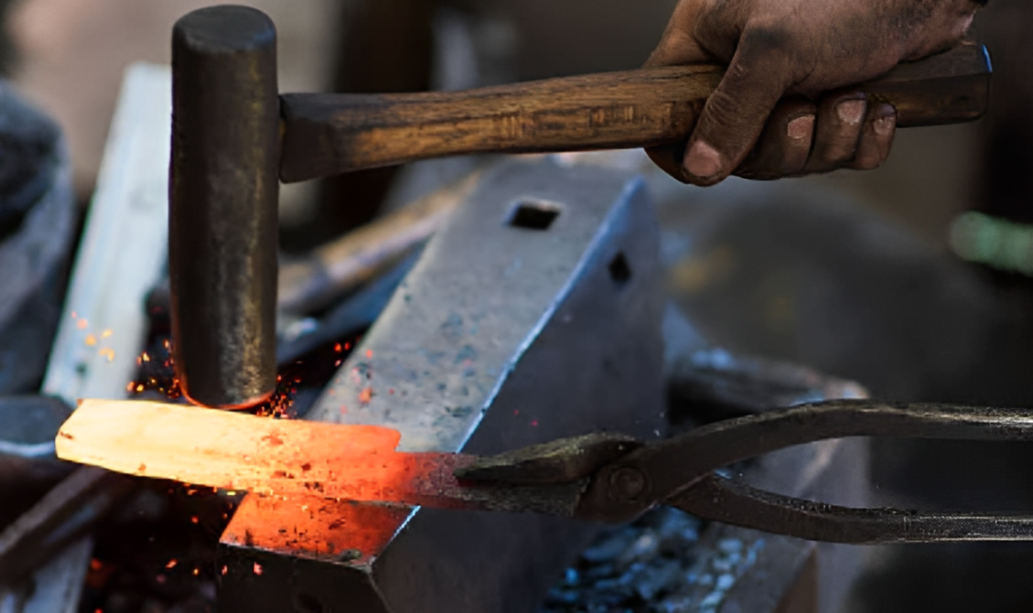
Q1. What is a Garasaki knife used for?
The Garasaki is a traditional Japanese knife designed specifically for breaking down poultry. Its name is believed to come from a variation of hone-saki (“bone tip”), reflecting its role as a bone-cutting knife. With its thick, heavy blade, the Garasaki excels at cutting through chicken bones and joints cleanly, making it indispensable for precise poultry butchery.
Q2. What are the design features of a Garasaki?
The Garasaki has several defining characteristics: a thick, heavy blade for strength and impact resistance, a slightly upward-curved tip for maneuvering around joints, and a wide blade profile that ensures stability and control. Its forward-balanced weight provides extra cutting force, with common blade lengths ranging from 150mm to 180mm. Together, these features allow the Garasaki to cut through cartilage, bone, and connective tissue without damaging the surrounding meat.
Q3. How is the Garasaki different from a Deba knife?
While both are heavy-duty single-bevel knives, their purposes diverge. The Garasaki has a narrower, more pointed tip, making it lighter and more agile—ideal for working around poultry joints. The Deba, by contrast, is broader and heavier, optimized for butchering fish, cutting through fish heads, and handling larger bones. In short, the Garasaki is a precision tool for poultry, while the Deba is a powerhouse for fish.
Q4. Is the Garasaki single-edged or double-edged?
Traditionally, the Garasaki is single-edged (kataba), offering precision and control around joints. However, some modern versions are made double-edged (ryōba) to suit left-handed users, ambidextrous handling, or home cooks seeking easier control.
Q5. Who should use a Garasaki knife?
The Garasaki is best suited for chefs and serious home cooks who frequently prepare poultry. Its design makes it a valuable tool in professional kitchens specializing in yakitori, izakaya-style cooking, or traditional Japanese cuisine. For those who prioritize precision and efficiency in poultry butchery, the Garasaki is unmatched.
Q6. Are there any disadvantages to a Garasaki knife?
Yes. Because it is specialized for poultry, the Garasaki is less versatile than knives like the Gyuto or Santoku. It should not be used for heavy chopping through large bones or frozen foods, nor for delicate slicing tasks. Its single-bevel edge also requires more skill to sharpen and maintain compared to double-bevel knives.
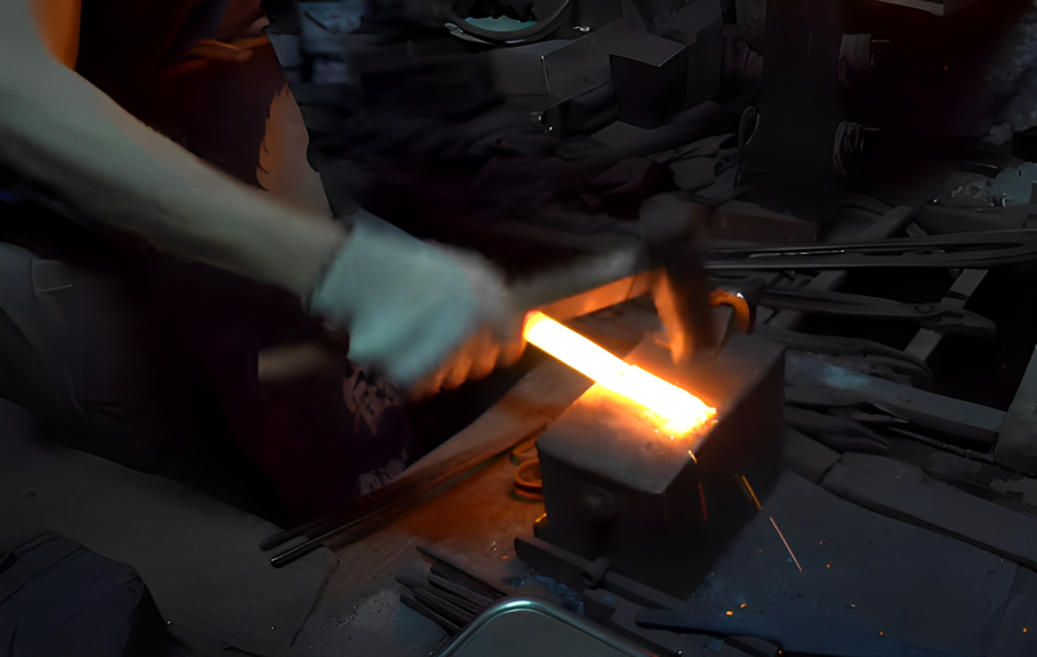
The Soul of Craftsmanship
-
The Garasaki — Strength, Precision, and Tradition Forged in Steel
A knife is never just a tool—it is a bridge between the chef’s hand and their heart. And among Japanese blades, few embody this truth more than the Garasaki.
-
With its thick spine and distinctive triangular shape, the Garasaki is purpose-built for strength and control. Unlike ordinary kitchen knives, it is crafted to take on the toughest tasks—splitting bird bones, cracking shellfish, or breaking down whole game—with decisive power and refined precision.
-
But the true value of the Garasaki lies not only in its durability, but in the trust it builds with the user. In the hands of a chef, it becomes a reliable partner, one that transforms demanding work into a smooth, confident rhythm. This is why it has earned its place not only in professional kitchens but also in households where cooking is cherished.
-
Every Garasaki carries the soul of its maker. Each curve, each edge, and each strike of the hammer reflects centuries of knowledge and dedication. More than a blade, it is a companion that elevates cooking into an act of creativity and joy.
How Japanese Knives Are Made: The Sakai Tradition
VIDEO PROVIDED: JAPAN TRADITIONAL CRAFTS AOYAMA SQUARE (YOUTUBE)
-
Sakai Forged Blades — Six Centuries of Unrivaled Craftsmanship
Loved by chefs around the world and trusted by 98% of Japan’s top culinary professionals, Sakai knives are more than tools—they are the living legacy of over 600 years of master craftsmanship.
-
At KIREAJI, we work directly with the Shiroyama Knife Workshop in Sakai, Japan, ensuring every blade is hand-forged, finished to perfection, and shipped straight from the workshop to kitchens across the globe. No middlemen. No mass production. Only authentic, artisan-made knives, crafted to elevate your cooking for a lifetime.


